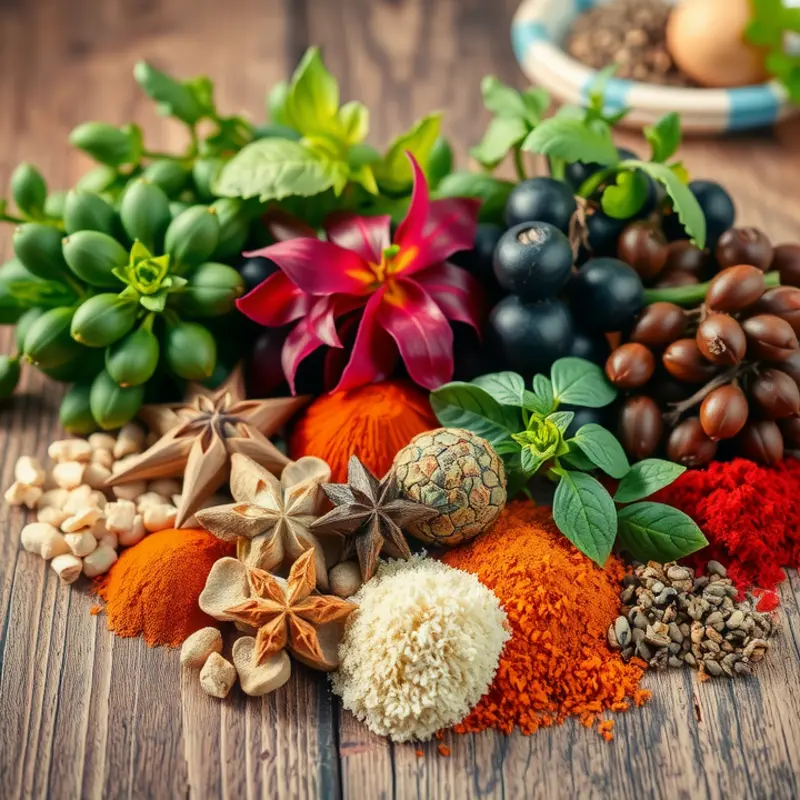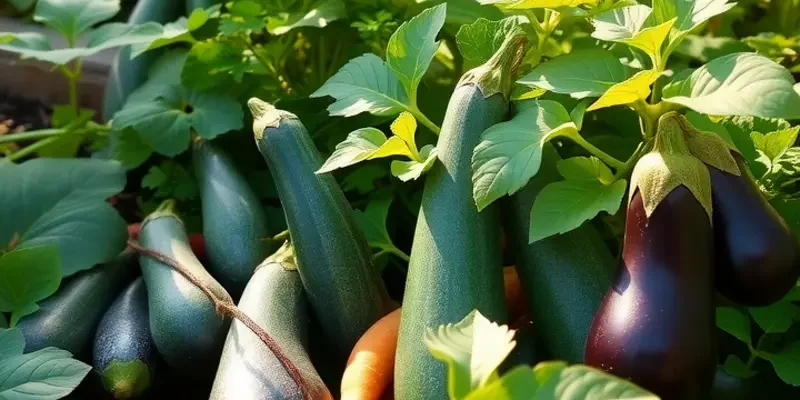Bell peppers are a common ingredient in many recipes, but their absence shouldn’t limit your culinary creativity. Whether you’re cooking for health reasons, allergies, or simply personal preference, there are many alternatives to ring in the flavor. This guide offers insights into practical ingredient substitutions and flexible cooking solutions to help you prepare meals bursting with taste, even without bell peppers.
Vibrant Vegetable Substitutes

When bell peppers are off the menu, finding vibrant replacements can invigorate your dishes with new textures and colors. Let’s explore three excellent candidates: zucchini, carrots, and eggplant. Each of these vegetables brings unique qualities to the table, allowing you to deliver delicious meals with visual appeal.
Zucchini, with its subtle, slightly sweet flavor and crisp texture, is an incredibly versatile substitute. Its neutral taste makes it a perfect addition to salads, stir-fries, and even as a raw snack. When using zucchini, consider slicing it thinly for salads or dicing it for a hearty stir-fry. Its water content adds moisture, allowing it to enhance pasta sauces or grilled into shreds for a colorful contrast.
For a pop of color and a sweet flavor, carrots are a wonderful choice. Beyond their vibrant hue, they provide a satisfying crunch. Carrots are ideal for raw applications, such as slaws or salads. Their inherent sweetness and firmness hold up well when roasted, making them perfect for replacing bell peppers in roasted vegetable medleys. Cooked, they release sugars that make them a delightful addition to stews and soups, warming up any dish instantly with a flavorful depth.
On the other hand, eggplant brings a unique, slightly smoky profile to your meals. Its soft, silky texture adds a luxurious feel to dishes. Eggplant is fantastic in grilled or roasted forms, absorbing the flavors of any seasoning or marinade. It excels in Mediterranean or Middle Eastern dishes, replacing bell peppers with grace while adding a creamy texture. Try cubing and roasting eggplant alongside other vegetables for a comforting ratatouille or incorporating it into your favorite curry.
While these vegetables differ from bell peppers in their original flavors, they provide delightful experiences on their own. Transitioning between ingredients doesn’t have to be daunting. The trick lies in understanding the flavors and how they interact within your dish. Learn more about mindful ingredient selection, keeping your meals both flavorful and exciting.
As you experiment with these options, consider their natural benefits. Zucchini’s moisture, carrots’ sweetness, and eggplant’s succulence each offer potential for culinary creativity. A well-chosen substitute not only replaces the lost element but also uniquely enhances your dish. So gear up, dive into these vibrant substitutes, and experience the joy of reinvented meals.
Flavor Boosters: Herbs and Spices

When cooking without bell peppers, it might seem a challenge to achieve the same vibrancy in your dishes. Thankfully, herbs and spices offer a powerful toolset for enriching meals with depth and aroma. Embracing these seasonings can turn an ordinary dish into a culinary masterpiece.
Let’s start with basil. Known for its soft, peppery undertones, basil can evoke a sense of brightness similar to red or yellow bell peppers. Add fresh basil leaves to salads or pasta just before serving to maximize their aroma. Dried basil also works well in soups and stews, slowly releasing its essence.
Coriander, both seeds and fresh leaves (cilantro), provides a warm, subtle lemon flavor. Its multifaceted taste profile can replace the sweet notes of bell peppers, particularly in Latin and Southeast Asian dishes. Toasting coriander seeds before grinding releases their intense citrus-like aroma—a great way to flavor rice or roasted vegetables.
Cumin is another standout. Its earthy, slightly bitter character adds complexity similar to roasted red bell peppers. Ground cumin can be integrated into Mexican or Indian-inspired meals. Adding it early during the cooking process ensures its flavors are fully developed and balanced.
You can also experiment with spice blends to mimic the intricate flavors of bell peppers. A mix of smoked paprika, onion powder, and garlic powder can recreate the roasted essence of charred bell peppers. Adjusting the proportions allows you to tailor the blend to your palate, giving you control over the smokiness and sweetness.
Balancing flavors in your cooking is a crucial skill. Start by identifying the dominant tastes you want to highlight—sweet, savory, bitter, or spicy. Herbs like basil and spices like cumin can bridge these taste profiles, creating harmony without overshadowing the dish’s primary components.
Remember to consider the texture and color lost without bell peppers. Incorporating vegetables like carrots or squash can add both firmness and a hint of sweetness, achieving a similar visual and gustatory effect.
Lastly, to further enhance your knowledge of balancing flavors, consider exploring alternative methods to boost flavor without relying on salt. Understanding these principles not only enriches your cooking experience but also presents a mindful approach to seasoning.
Embrace the plethora of tastes at your disposal, and you’ll find that cooking without bell peppers becomes not a limitation but an opportunity to enjoy a broader spectrum of flavors.
Final words
Cooking without bell peppers opens up a whole new world of flavors and creativity. By utilizing vibrant vegetable substitutes and infusing your dishes with the right herbs and spices, you can achieve remarkable taste and satisfaction. Embrace the challenge of cooking without certain ingredients, and you’ll not only learn to adapt but also expand your culinary repertoire. Experiment with different combinations, and remember that every dish is an opportunity to explore new flavors. Happy cooking!







